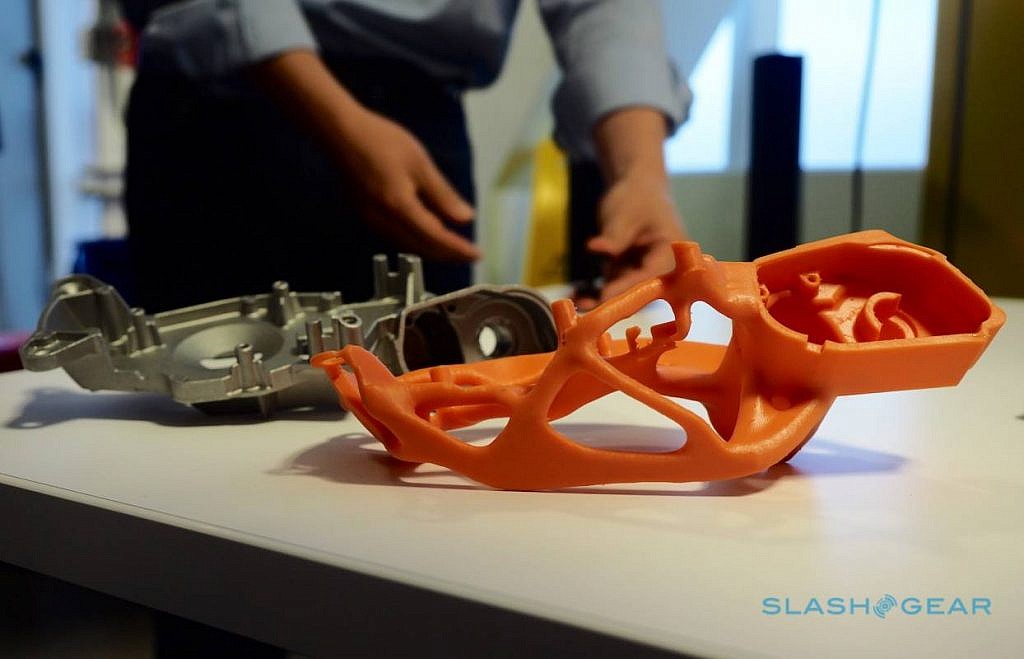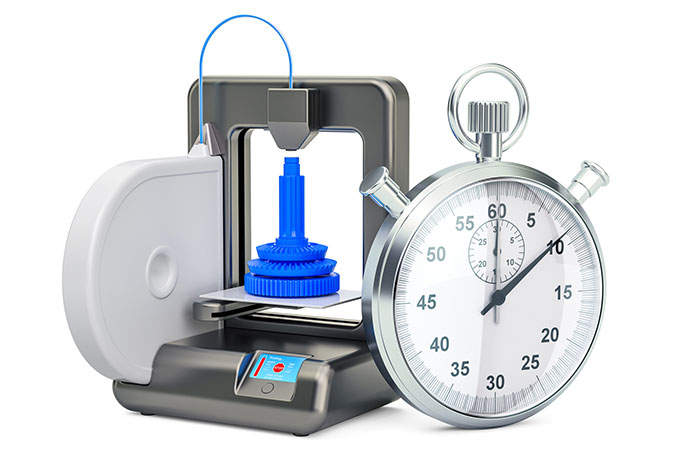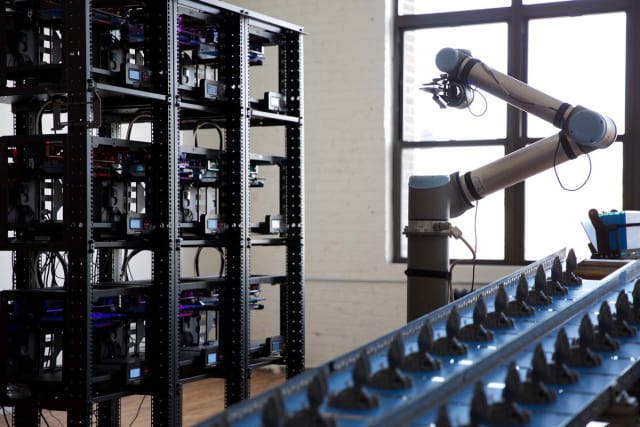3D printing was an exciting technology that burst onto the scene not too long ago, at first only housed in large universities and factories that could afford these immense and quite expensive machines that would take hours upon hours to print out a simple model that was created on a computer. Flash forward to now, and it is commercially available to a vast market, a lot more affordable and quick, and the possibilities are allowing small players to take advantage of part building, rapid prototyping, physical modeling, and more.
That progress is not the end, though, but rather it’s the beginning of what will become possible in the years to come. And we won’t have to wait for the distant future—many trends and developments are in the works that are just past our fingertips on the horizon. Let’s dive into what a few of these upcoming 3D printing trends are.
3D Printing will Become a Mainstream Technology for Serial Production
As mentioned, early 3D printing was very niche and only for the elite who could afford this. Initially, the slow pace and high cost of material and machine operation made it only viable for prototyping products and parts, since while expensive, it was more affordable than creating the mass production processes to create these models.
But those issues with speed and cost are rapidly becoming a thing of the past, and with it comes the ability to utilize the process, not for back of the lab creation but actual serial production.
Reports show that over half of companies are already using 3D technology for production, and this prevalence is only going to increase. Of note, many automakers are utilizing the technique to create 3D-printed parts for their vehicles and every year, new types of companies and products are being brought into the fold of the revolution.

By being able to use the capabilities of 3D printing trends in the house to create niche parts, parts that are needed on a large scale, and parts that might need to be modified during the production process, companies can increase production and save money.
In the old days, the creation of a new type of part would require an entirely new production assembly designed around that one part. Still, if mainstream production can create new parts using the same equipment, then the change of production will be quicker, cheaper, and more prevalent.
3D Printing will Become Smarter
In addition to being quicker and more affordable, 3D printing technology is quickly combining with the trends of smart products and the Internet of Things to create a smarter type of 3D printing. For example, many 3D printer manufacturers are starting to integrate new and advanced sensors and cameras that will empower the recording and measuring of production in real-time.
Combining that data with algorithms, artificial intelligence, and machine learning will increase the accuracy and precision of the resulting 3D models and also can serve to make the entire process more efficient (and, thus, less costly).
Another example of the 3D printing process becoming smarter is in having the smart 3D printers record and watch the temperature of the 3D printing materials used in the process. Initially, the processes would follow the model outlined in the computer program, and whatever came out was what you got.
If there was too much material pooling, if the heated material melted, or any other problems came about that resulted in the physically printed model not being the same as the CAD model, that was just part of the process. But by recording and collecting data on the process as it goes, the smart 3D printers can learn about what does and doesn’t work and adjust for future prints to more precisely ensure that whatever you see on the computer screen matches what gets printed.
Foreseeable 3D Printing Trends are On the Horizon
Getting smarter and getting used for more mainstream production are the large overarching trends, but to get to that point there will also be a revolution towards a host of new foreseeable trends in 3D trends along the way:
- 3D printers will get faster for additive manufacturing The speed of the technology has long been one of its drawbacks, as it took a lot of time to iteratively add the material, wait for it to solidify, and continue. But several manufacturers of 3D printers have begun pushing the limits of speed with technologies like thermal inkjet. These new developments are seeing 3D printing speed records broken regularly.

- 3D printers will ‘colonize’ a wide range of environments While early methods had to take place in closed environments so that the temperature and humidity of a room didn’t negatively impact the results. But with developments today in both printers and the 3D printing materials, printing is starting to take place in new environments, and excitingly in the field where the 3D printed parts are needed: on oil rigs, on military bases, and elsewhere that immediately printed parts can be most beneficial.
- 3D printers will become more versatile, able to handle and combine an expanding variety of materials When 3D printers are limited by what materials they can print, the applicability of 3D printed parts can only go so far. But as developers have created new materials with new properties that fit into the world of 3D prints, expect to see new and interesting materials that allow 3D printed parts to take hold in innovative new areas.
- Software advances will amplify the power of 3D printing Before any part can be 3D printed, it needs to be designed and modeled on a software program in some way. As these software programs advance and become more user-friendly to people in the mainstream, the capabilities and usefulness of the method will be amplified.
- The 3D printing ecosystem will grow at a faster pace through an acceleration in partnerships and collaborations Where 3D printer manufacturers and users of the final products were more siloed, there was minimal advancement in how these different stakeholders interacted. But shortly, partnerships among those in the technology are expected to grow, and with that, you’ll see an acceleration in the improvement of the process.
- Metal 3D printing will continue to mature Early 3D printing was always based on plastics and polymers, which were great for some functions but not for others. But the holy grail has long been metal 3D printing, which could automatedly create machine parts at high speed and low price point. With metal, the process is one of the fastest-growing segments of the sector, and expect the near future to be filled with advances in the field.
- Automation will become a key focus for the industry 3D printing today incorporates a lot of human intervention in the modeling, design, and implementation, but as with all industries, we see a shift towards automation. Look for computers and machines to take over even more of the process in the coming years.

Main Benefits of 3D Printing
If you’re not convinced of the possibility of 3D printing, consider these four main benefits of the process:
- It allows you to test your ideas quickly: In rapid prototyping, 3D printing trends allow you to take your design to the physical part much quicker than any other manufacturing process, and much more affordably. Thus you can hold your idea and even test it out before wasting any more design capital on the idea.
- Continual designs: Taking that idea even further, by more quickly testing designs, you can create a more iterative design process that lets you freely and quickly adapt and incorporate new design elements into your ideas.
- Real materials and real parts: 3D printing, as opposed to 3D modeling on a computer, incorporates real materials and real parts. This functionality opens up your design process to testing and 3D printed products in different ways.
- Saving costs: It keeps coming back to saving money, but it can’t be overstated. The cost for creating a prototype can drop from hundreds or more dollars down to under $10. That allows you to test more and more freely. So while the 3D printer is expensive initially, businesses will surely see them pay for themselves.
Which Industries would Benefit the Most from 3D Printing?
Given all the benefits above and new technological developments, there are a host of specific industries that are poised to benefit the most from advances on the horizon in 3D printing. The medical care field, for one, benefits from doctors who can practice on 3D printed organs before operations and thus hone their skills. Doctors can also print drugs and medicines, so they are made specifically to the patients’ needs.
In the related field of dentistry, the ability to 3D print molds or even new teeth is revolutionary. Engineering has been the main field for 3D technology from the beginning, and these new advances will allow for even better prototypes or even fully functional parts that don’t need a separate production process.

In the world of architects, models are so critical, and by being able to take their CAD buildings into a miniature physical model quickly and easily, the entire process is improved.
- Medical Care
- Dental
- Engineering
- Architecture
Conclusion
As you can see, the future of 3D printing trends is indeed bright, and we need not wait many more years for revolutionary changes in 3D modeling to make the field even more valuable and viable. Be it in any field – product design, furniture manufacturing with 3D printing, and more, if you want to learn more about what 3D printing can do today and what revolutionary concepts we can implement for you, get in touch with us today to find out more.
-IndiaCADworks
IndiaCADworks



